A glimmering pool light will add dazzling high notes to your poolscape; but a dim or broken light can leave you in the dark as to how to fix it. When your light goes kaput it is time to roll up the shirt sleeves, pull out the test probes and go to work.
But where to start? That is a tough question, as a pool light can have a hundred or so feet of cable, circuit breakers, GFCIs, and junction boxes to contest with. I’ve learned to start with the easy and then work your way up to the hard. We will walk through some simple fixes and some not so simple.
So, sit back, relax and let us enlighten you. I swear that is the last pun in this blog…
What’s the bright idea? (I lied)

The Easy
Loose Fixture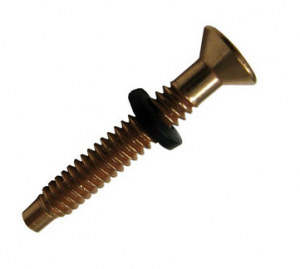
A pool light, despite all its waterproofing and hundred or so volts of electricity, is held into the pool wall by one bolt called the lockscrew. The lockscrew is located at the 12 o’clock position on the light fixture face. If the fixture wobbles when touched or a strong ripple hits it then a loose screw is likely the cause.
To fix the issue, dip into your pool with a phillips head screwdriver and tighten the screw. If the screw is stripped or lost, make sure you replace the screw and the gum o-ring. The o-ring is important to prevent excess water leakage into the niche or housing.
Leaky Pool Light
For the close observing swimmer, you may notice water in the light fixture. Most of the time, this issue is not discovered until 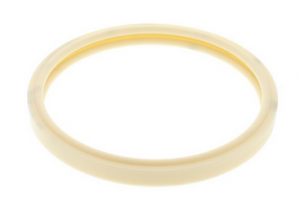 the bulb blows. As we all should know, water and light sockets do not mix.
the bulb blows. As we all should know, water and light sockets do not mix.
A leaky pool light stems from a bad lens gasket. This part is also called the housing gasket. The heavy gauge rubber ring acts as a clamp seal that waterproofs the joint between the lens and light housing. Chlorine exposure or old age can deteriorate the rubber to warp so that it allows water to reach the light internals. A fixture filled with water can also cause a breaker to trip, so be mindful of that when troubleshooting. Replacing a pools light lens gasket is pretty simple and even the more novice pool owners can do the job.
Another less likely cause of a pool light fixture leak is a power cord conduit seal leak. If the conduit seal degrades to that point, the light is likely dead and will require replacement.
Change the Bulb
If your pool light will not turn on and you suspect the bulb, the old shake test is simple enough for any pool owner to do. The steps on the bulb shake test are simple: remove the light bulb from the fixture and shake it next to your ear. If you hear the ring-a-ting-ting of a broken filament then it’s time for a new bulb.
If the bulb was relatively new before it blew, I would not run out and replace it right away. A test of the circuitry may be necessary to be certain the new bulb will not be ruined by a power surge or some other electrical issue. Take a look at our guide on replacing a pool light bulb.
The Not So Easy…

Tripping the Breaker
The dreaded CLICK of a tripped breaker is an annoying and sometimes befuddling event. Annoying because most of the time the reason for the trip is a mystery, unless of course you just plugged in an appliance that overloaded a circuit.
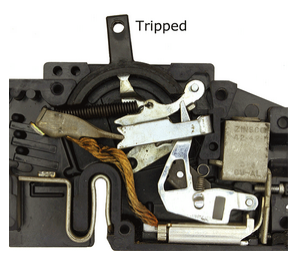 Before we do anything, we want to reset the breaker and also restore the circuit to the point before the trip. To perform the latter, we will unplug any appliance that may have immediately caused the overload.
Before we do anything, we want to reset the breaker and also restore the circuit to the point before the trip. To perform the latter, we will unplug any appliance that may have immediately caused the overload.
Next, we will reset the breaker at the box. When a breaker is tripped, it flips to an idle position and will not resume current flow until it is completely reset by hand. To reset the breaker, find the flipped breaker, push it to the complete off position and then flip on. If the switch is not completely reset, it will spring back to idle. If you correctly reset the breaker but it continues to flip to neutral, replacing the breaker may be necessary.
Bad Breaker
The actual task of checking the breaker is not the difficulty, mainly because the task consists of touching a couple probes to terminals. The usual hurdle homeowners have to overcome is getting a multimeter to complete the task. Your run of the mill meter can be found at a local hardware store or borrowed from friendly neighbor.
To test a single pole 120 Volt breaker we will need to remove the front panel of the breaker box to access the terminals. Before removing the panel, make sure to mark the switch that handles the light’s load.
The multimeter will have two leads: one Red lead (positive) and one Black lead (Negative or Ground.)The black lead is connected to COM port and the red to the mAVΩ port, the latter will be touched to the “hot” wire to measure volt load. Set the multimeter to read 120 Volt AC or higher so it can accurately read your breaker. Touch the red lead to the single pole terminal and the black lead to the neutral base row. The neutral row is normally labeled, but if it is not look for terminal row with the white wires.
Tripping the GFCI
The ground fault circuit interrupter, better known as the GFCI is a safety device used on installations with a higher than normal risk of electric shock. Most homeowners are familiar with GFCIs from their bathroom electrical sockets. The socket GFCI are also used on construction sites where machinery cords could come into contact with water or sheared.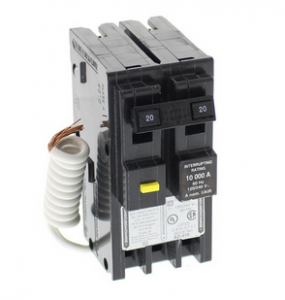
The GFCI works by reading a circuit’s current for an irregularity that could be a symptom of a shock hazard. A GFCI circuit can be activated by a current change as low as 4 milliamps. Interrupter switches are an absolute necessity for safety at home or work, but that sensitivity can cause a nuisance, quite literally. A phenomenon known as nuisance tripping occurs when a GFCI trips when it mistakenly reads a current change as a potential shock hazard.
Common triggers of nuisance trips are:
- Circuits longer than 100 feet
- Lighting circuits using fluorescent bulbs
- Permanently installed electric motors, i.e. bathroom exhaust fans
If the above do not apply to your tripping circuit, it may be time to replace your GFCI. Like any electronic component, these interrupter switches have a lifespan and need to be tested monthly to determine their status.
Line Continuity
A pool light may have up to 200 feet of wire running from the power source to the fixture. Within that length of cable, there may be a fault in a junction, the line or the fixture. Checking line continuity is the process of finding the source of a fault in circuit. Again this task can be done with the handy dandy multimeter. We will be starting from a point in which we assume you have already checked the GFCI and breaker as mentioned earlier in this piece.
- Set the multimeter to read for 120 or 12-volt range for proper readings.
- Measure line voltage at junction box. A junction box is the point at which multiple electrical device cables can be joined to one main line. Not all applications utilize a junction so this step may not apply. If the junction reads 0 then the mainline leading to box is malfunctioning. Have an electrician inspect and install a new main line from box to breaker.
- Remove fixture from niche, then remove bulb from fixture, touch multimeter leads to fixture socket for reading. If the meter reads 0 from the socket, the fixture is dead and needs to be completely replaced.
As you can see the testing of a pool light is straightforward due to the simple nature of its design. One electrical circuit to the fixture allows for a relatively easy troubleshoot without hard labor. As with anything electrical, if you have any questions or reservations, ask a professional before fiddling with live wires. A working pool light is not worth risking electrocution.

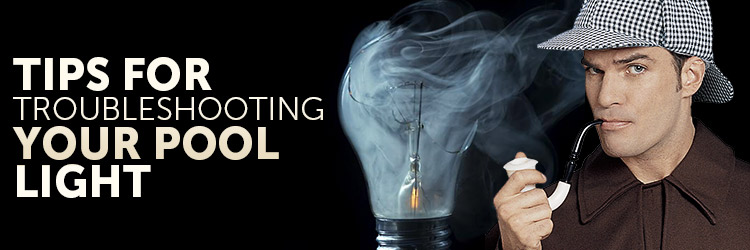
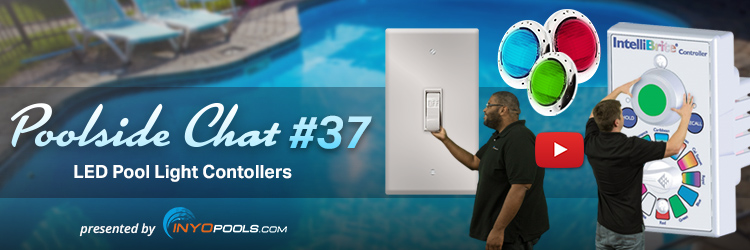
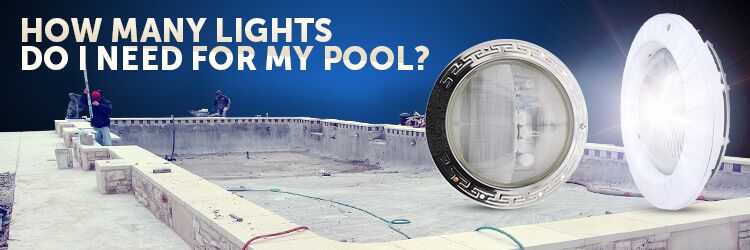
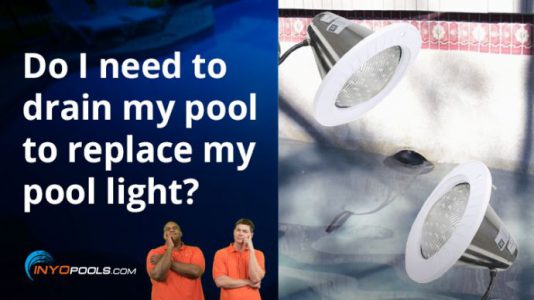
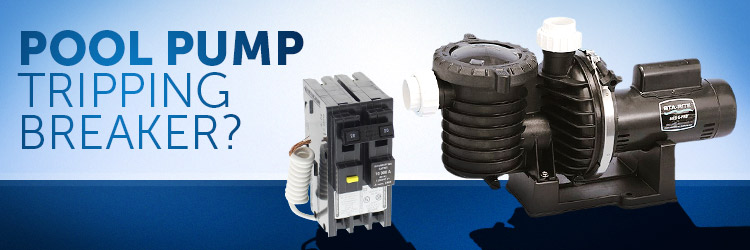






Hi I have PAL Color Touch Receiver/Driver PCR–2D-35 and lights won’t come on and no matter what button on remote I press, I get red flashing. We had a power outage and when it came back on – no pool lights work. The receiver has power and I replaced the GFCI. I even had an electrician come out and he couldn’t find anything wrong with wiring etc. I am currently lowering water in pool to check bulbs. If this is not the issue I believe I ran out of what to do. I can’t even find a replacement for receiver. Any advice is greatly appreciated.
My pal pool lights turn on randomly. I have rest the remote and still will not work. Any suggestions
It may help to know which specific model you have.
Is the light connected to an automation system? Fiberstars PAL-2000 / PAL-2000/PAL-TREO Accessories
My pool light turns on white but won’t change color
What is the make and model of the pool light?
Warning Do No Buy Jandy Color LED lights they do not work as advertised. Check the complaints everyone who has purchased them has had nothing but problems after buying and replacing them. The customer service is the WORST. Don’t bother selling it’s worse than trying to call the irs during a pandemic
I purchased Jandy color light LED in 2019. I had probably less than 4 hours on the light. One night I wanted to use the pool lights. I turned on the light switch and the lights came on flickered and died. I contacted Zodiac they sent me another Light out and I replaced it. Here it is 2021 and the exact same situation I had less than hours on the new light because I had it installed during the winter and this summer I turned the light on the exact same think happened flicker and no lights . I tried contacting Zodiac I sent emails and they totally ignored me. MY ADVICE don’t buy the Jandy color lights I read many horror stories and I wish I had know before I bought into their slick sales pitch
I have 2 intellibrite 5G underwater color changing led lights. When I set the color changing mode to anything (say, red, white and blue) one light does perfectly changing to those colors. The other just stays fully illuminated green, dims a bit to a dull green and then back fully illuminated green. This one light never takes on the correct colors. What gives? Had the pool 5 years abs both lights originally worked fine.
I have a 12 v Aqua light system for my pool that is not working. I have measured the voltage going into the transformer (good) and measured the voltage out (good). I have measured the voltage at the bulb end with no bulb (good). The problem is when I attach the new bulb. It doesn’t light. I checked the voltage, with the bulb attached and get 0 volts. Could the problem be the transformer when a load is applied?
It’s a single POLE breaker. Not single PULL. And GFCI is Ground Fault CURRENT Interrupter, not Circuit.
Even OSHA calls it a ground fault circuit interrupter. So, I’ll be taking their definition over yours.
https://www.osha.gov/electrical/hazards/grounding/gfci
I have a very old, but well maintained pool. I replaced the main pool light last year after it not functioning for several years. The Spa Light worked fine. I was still protected by the GCFI because I had disconnected the main pool light wires in the connection box and put wire nuts over the power leads.
So, now the main pool light works and after 1 year, the GCFI now trips on the spa light! It is original and 40 years old. I checked continuity of the bulb and it is good. I checked the voltage from the control box and this may be my problem. There is 120 volts on the hot lead to ground. The is 72 volts on the neutral wire to ground. Does this sound like I need to run new power leads for the spa light? I hope I can pull out the old leads and get new leads through the conduit….
Have you rewired anything in that breaker box just before this problem started? If you haven’t changed any wiring then you would probably need to run new leads because there is a fault
I have a 20 year old pool with 2 submerged lights. The lights come on and work for approx 1 hour and then they trip the GFCI breaker. I rest the GFCI and they work again for about an hour. Any ideas what the problem is?
Tom
First guess, you have a bad GFCI or bulb. As I mentioned in a few comments above, did you try putting the light on a different breaker to see if it trips that one too? Or you can test the circuit continuity with a multimeter.
I recently had an electrician out to test my pool light because it would not work even with a new bulb. The electrician found that one of the transformers was dead so they wired the pool light to the transformer for our inground spa light. Both lights worked problem solved right. Not exactly, the pool light after 5 minutes slowly faded and died but the spa light was still on. Bad light bulb or possible water in fixture? I pulled the fixture, no water, bulb was burnt out. Replaced bulb, resealed and reinstalled fixture. Again light works for about 5 minutes and burns out. When I say burns out it doesn’t flash then out, it fades out. What could cause this? Mind you the spa light stays on.
My guess would be that the transformer is not rated for the wattage of the extra light. At first, it can keep up with the demand, then as the transformer begins to overheat, the larger light suffers more from the drop in current. Whereas the spa light can operate with the transformer’s diminished output.
What is the wattage capacity of the transformer and the required watts for the lights?
I have a PAL color touch lighting system. 3 LED lights, PCR-4 controller. Pool is 18 months old and lights would not work. Turns out the controller shorted out because the contractor did not follow code and ensure the J box is above the water line, and used regular wire nuts (not waterproof), so J box was filled with water. Replaced the PCR-4, lights work, but one light does not display green (The other work fine). Could this be something as simple as a wire connection either at the LED light housing or at the J box where the splice is? Thanks for any info you can provide.
Because they are LED lights, I don’t believe that you can correct the one not showing green. If you are an electrical engineer, you may be able to open it and troubleshoot the circuitry, but that process is above my ability, unfortunately.
Hello,
What is the purpose for the metallic coating on the outside of an incandescent pool light?
Also, why is there a spring coil loop in the light fixture?
My pool lights stay on for 1 or 2 seconds and then the GFCI circuit trips (sometimes). I’ve tried cleaning the light socket with vinegar. I need to try baking soda next. I read above that maybe the GFCI is old. I’m thinking of replacing that next. Any other ideas?
Thank you!
Bulbs that use a mirrored coating on the back of the light, do so to maximizes the direction of the light emitted by the bulb. That coil inside the light fixture is there to cut the circuit to the light in the case that an incandescent bulb bursts.
I would do the standard circuit troubleshooting to determine if the breaker or the light cable is compromised.
I just replaced a 120v spa light in my pool after I left the old one on for two days on accident. It blew the old bulb up and fried the entire fixture. I installed the exact same model and ran the new wire from niche to junction box. It is maybe 12ft between the two even though they give you the full 100ft cable. I tested everything with the multimeter before connecting and everything was great.
The light worked for 6 hours or so then tripped the breaker, and now it trips the breaker after between 6 and 20 minutes. I was thinking heat or something??? I’ve changed the screw twice just to make sure. Any thoughts?
I sound like a broken record, but I would try to put it on a different breaker or install a new one. People forget that GFCI breakers can fail, and i myself have spent a lot of time running around checking this or that only to find out the breaker was the problem. Is there water in the light fixture?
What screw are you changing?